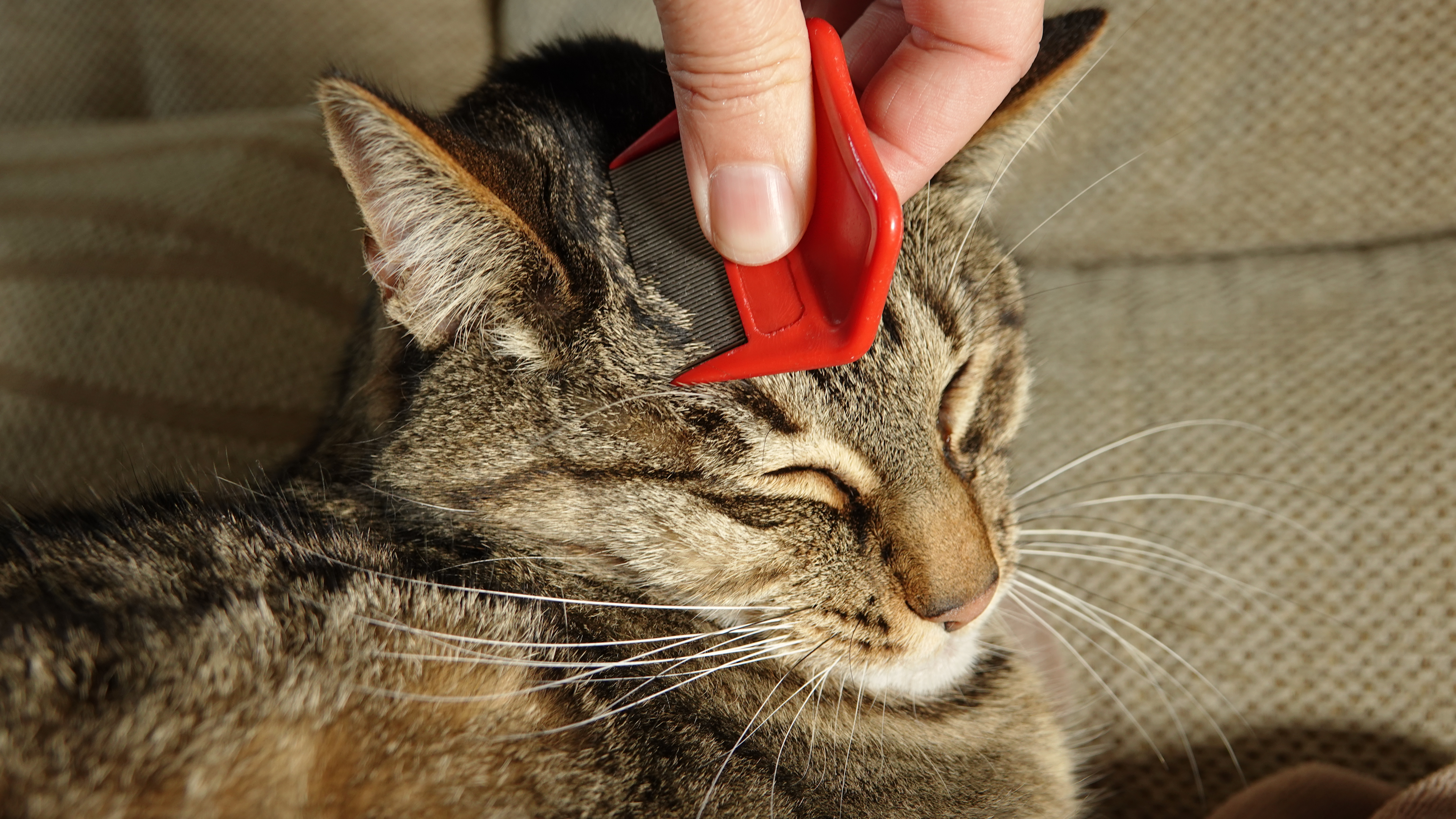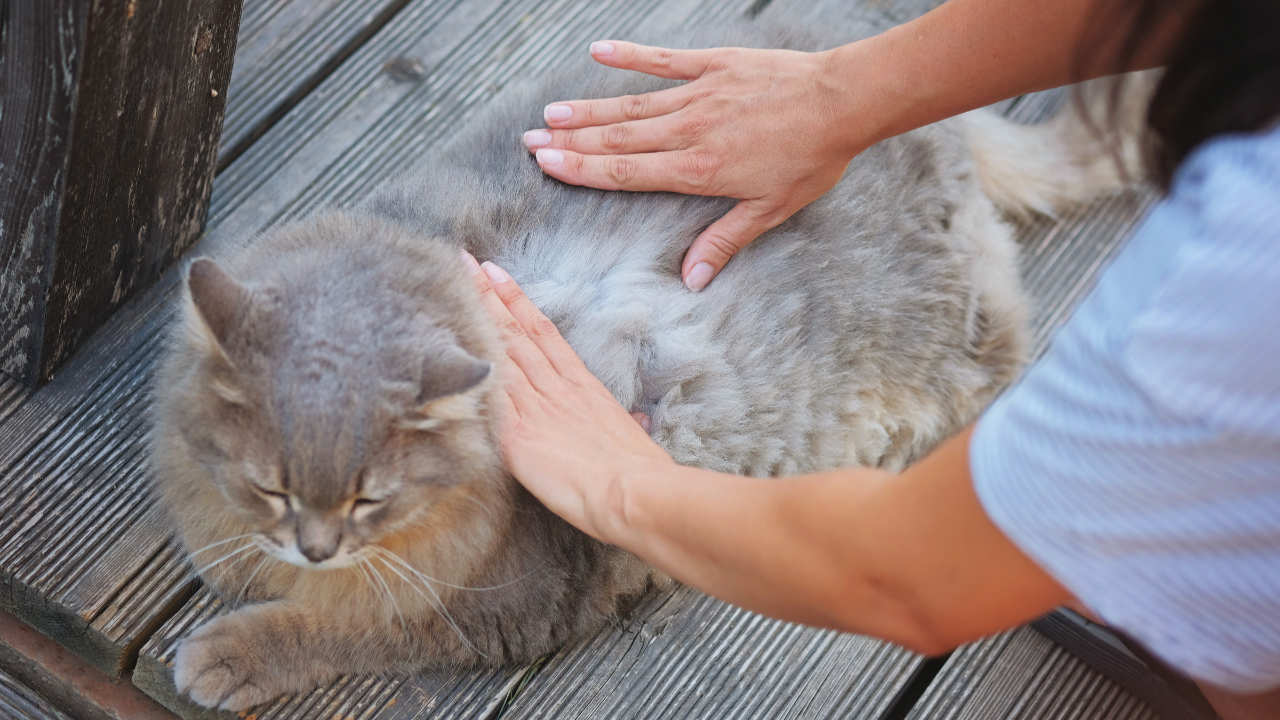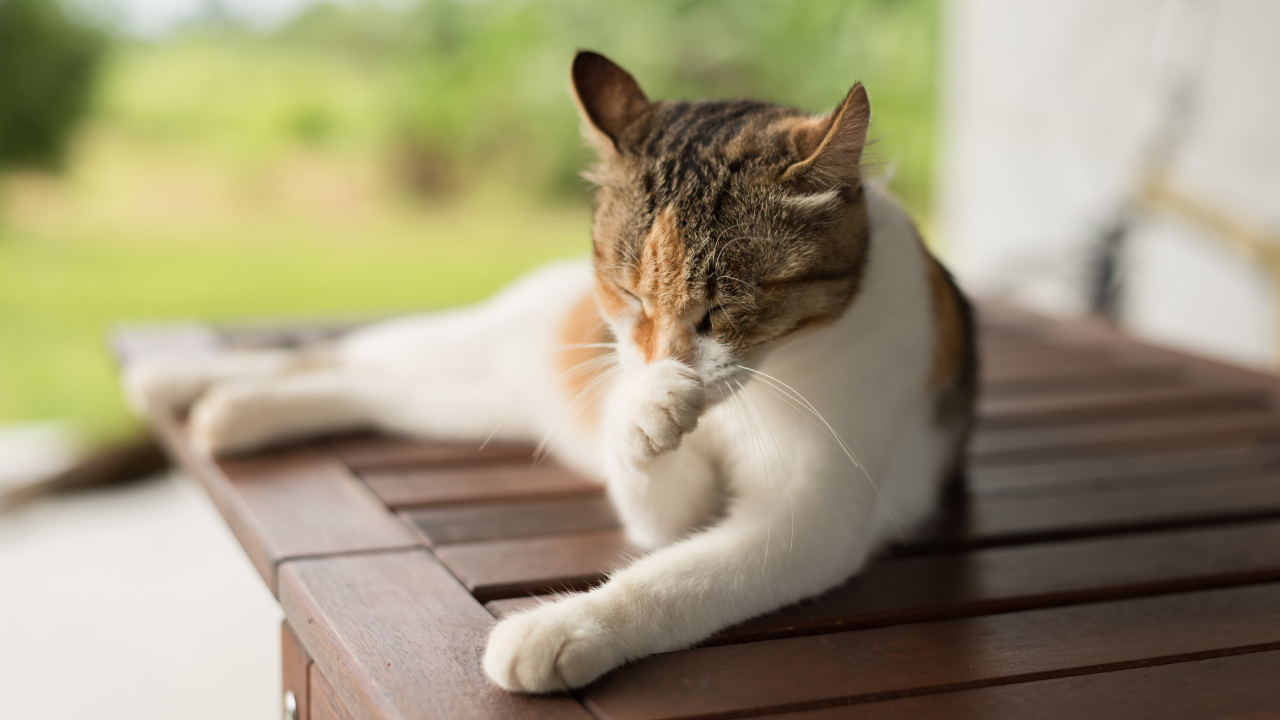
In this blog post, we will look at the impact of flea allergies in cats, and explore their incidence compared to food and environmental allergies. We will also discuss how flea allergies can lead to miliary dermatitis and the significance of controlling fleas in the environment. Lastly, we will propose five effective ways to control fleas on your cat and in their surroundings.
Cat Dermatitis: Causes
Flea allergy is the most common cause of miliary dermatitis in cats. It occurs when a cat's immune system overreacts to the saliva of fleas.
What other allergies cause miliary dermatitis in cats?
Less commonly environmental and food allergies, ringworm, can cause these lesions.
What are the signs of feline miliary dermatitis in cats?
When a cat with a flea allergy is bitten by a flea, it triggers an allergic reaction, leading to a condition known as miliary dermatitis. Miliary dermatitis is characterized by small, red bumps resembling millet seeds, hence the name "miliary." These bumps typically appear around the base of the tail, back, neck, and head. The incessant itching caused by these bumps can drive cats to excessive scratching, resulting in hair loss, skin infections, and further complications. What is miliary dermatitis and how do fleas cause it?
What does miliary dermatitis look like in cats?
Miliary dermatitis is characterized by small, red bumps resembling millet seeds, hence the name "miliary." These bumps typically appear around the base of the tail, back, neck, and head. The incessant itching caused by these bumps can drive cats to excessive scratching, resulting in hair loss, skin infections, and further complications.
Testing for Cat Environmental, Flea, and Food Allergies
Serum and intradermal testing can be done to help diagnose allergies. Food allergy testing is expensive has not been validated by independent sources . Please check out this blog post to understand food allergies in cats better: https://holisticvetblend.com/blogs/news/understanding-food-allergies-in-cats-symptoms-diagnosis-and-management
Checking for Signs of Flea Allergies
If your cat has miliary dermatitis it is time to check for fleas even if you do not see fleas
Because cats are known for their fastidious grooming habits, they diligently clean themselves and remove fleas through licking. Additionally, fleas spend a significant amount of time off the pet, hiding in carpets, bedding, and furniture. So even if your cat appears flea-free, there could still be a hidden infestation in your home. To detect the presence of fleas, we recommend using a flea comb. Comb your cat's fur, and collect any debris that you find. Take this debris and place it on a white surface. Then, apply a small amount of alcohol on it. If the debris turns a burnt orange or rust color, it would indicate the presence of fleas in the environment. This simple yet effective method can provide valuable insight into whether your home requires flea control measures.

But my other pets are not itching so it must not be fleas!
If you find that only one pet in your household is experiencing itching and other symptoms, while the others seem unaffected, it's possible that the symptomatic pet is allergic to fleas. Just like humans, pets can have individual sensitivities and allergies. This is much like one person being "eaten alive" with itchy welts on their skin, and others didn't notice they were bitten as they are not sensitive.

Understanding the flea life cycle
To effectively combat flea allergies, it is essential to understand the flea life cycle. Fleas go through a four-stage life cycle: egg, larva, pupa, and adult. While adult fleas reside on the cat, approximately 95% of their life cycle occurs in the environment, such as carpets, bedding, and furniture. This emphasizes the importance of not only treating the cat but also controlling fleas in their surroundings.
Importance of Controlling Fleas in the Environment:
Controlling fleas in the environment is a critical step in managing flea allergies in cats. It is not enough to focus solely on treating the cat; preventative measures must extend to the surrounding areas. Failure to address the environmental aspect can result in repeated infestations, making it challenging to alleviate flea allergies for your feline friend.

Cats are sensitive to essential oils
While essential oils are commonly used for various purposes, it's vital to exercise caution when using them on or around cats. Unlike dogs, cats have a unique sensitivity to certain essential oils, which are generally not well tolerated. It's best to avoid using essential oils directly on your cat or in their living spaces.

How is miliary dermatitis treated?
First and foremost, it's crucial to identify and address the underlying cause of the condition. Miliary dermatitis is most often triggered by allergies, such as flea bites. It would also be prudent to get a culture of the affected areas for ringworm.
To provide relief and promote healing, we recommend a multi-faceted approach. This includes topical treatments to soothe irritated skin, such as anti-inflammatory creams or ointments prescribed by a qualified veterinarian.
Importance of Controlling Fleas in the Environment:
Controlling fleas in the environment is a critical step in managing flea allergies in cats. It is not enough to focus solely on treating the cat; preventative measures must extend to the surrounding areas. Failure to address the environmental aspect can result in repeated infestations, making it challenging to alleviate flea allergies for your feline friend.
Five Effective Ways to Control Fleas:
1. Regular Grooming
Grooming plays a crucial role in controlling fleas. Comb your cat's fur regularly with a fine-toothed flea comb to remove fleas and their eggs. This can help reduce the flea population on your cat and minimize the risk of allergic reactions.

2. Vacuuming and Cleaning:
Vacuum your home thoroughly, paying particular attention to areas where your cat spends most of its time. Wash your cat's bedding and any removable fabric items in hot water to eliminate flea eggs and larvae.

3. Flea Prevention Products:
If your pet is suffering from severe allergies, you should consult your veterinarian and select appropriate flea prevention products for your cat. Never use products labeled for dogs for cats that contain permethrins. These are very toxic to cats and will cause severe neurological signs.
Also, when it comes to treating a flea infestation, all pets in the environment must be treated.
4. Environmental Treatments:
A Child-Safe Flea Control Option: Finding a flea control product that is safe for children and pets can be challenging. However, Flea Busters Rx for Fleas Plus is a great option to consider. This fine, powdery substance is statically charged, making it highly effective against fleas. The best part is that Flea Busters is safe for children and pets, allowing them to come into contact with treated areas immediately after application1. By using Flea Busters, you can effectively combat fleas in your home while keeping your little ones safe.

5. DIY Solution: Boric Acid for Flea Control
When I was on a very tight budget and living with two other veterinary students in a household with 5 dogs we successfully used boric acid to control fleas. It can be an effective tool for tackling fleas in carpets. Boric acid is a natural compound that works by dehydrating and killing fleas and their larvae. Here's a simple DIY solution using boric acid:
1.Thoroughly vacuum the carpet, paying special attention to areas where your pets spend most of their time.
2.Mix boric acid powder with baking soda in equal parts. This combination enhances the flea-killing properties of boric acid.
3.Sprinkle the mixture generously over the carpet, focusing on flea-prone areas.

4.Using a broom or brush, work the powder into the carpet fibers to ensure it reaches the base.
5.Leave the mixture on the carpet for several hours or overnight.
6.Vacuum the carpet again, making sure to remove all traces of the powder.
Remember, while boric acid is generally safe to use, it's essential to take precautions. Keep children and pets away from the treated area until the powder is vacuumed up completely. Additionally, avoid inhaling the powder and use gloves when handling it.

Flea allergies in cats can cause significant discomfort and health issues for our beloved feline companions. By understanding the nature of flea allergies, the importance of controlling fleas in the environment, and implementing effective preventive measures, we can create a safe and flea-free environment for our cats. Remember, early intervention is key to addressing flea allergies and preventing complications. Together, let's ensure our cats lead happy, healthy lives, free from the misery of flea allergies.










